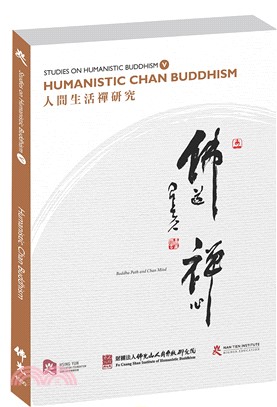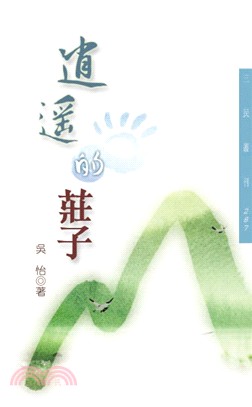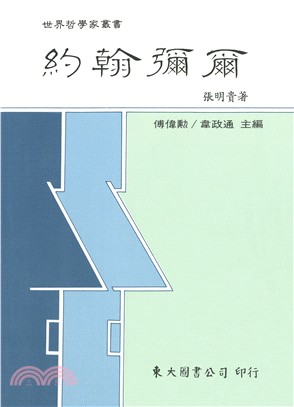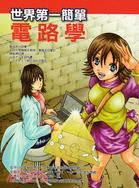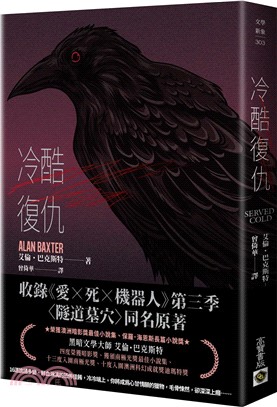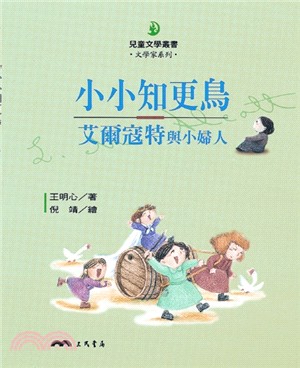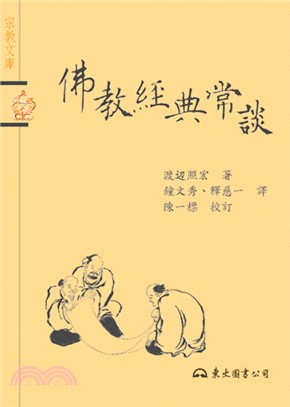商品簡介
序
Editor’s Preface
Volume five of Studies on Humanistic Buddhism contains eight articles translated from Chinese, one article that was written in English, and four student papers. The theme of the articles is Chan Buddhism, particularly Fo Guang Chan as developed by Venerable Master Hsing Yun. Chan is the Chinese version of what in English is often known by the Japanese pronunciation—Zen.
The topic of Chan was chosen because it is the foundation upon which Venerable Master Hsing Yun developed Humanistic Buddhism. He was the forty-eighth lineage holder of the Linji school of Chan. The past tense is used here because Venerable Master Hsing Yun passed away on the fifth of February in the year 2023. He was one of the main protagonists in the revival of Buddhism, and in giving Chan a breath of fresh air. It is fitting that most of the articles in this volume discuss Venerable Master Hsing Yun and his take on Chan. One was written by the Venerable Master himself. He taught us that Chan is an intrinsic part of life, not a theoretical abstraction. He reminded us that Chan does not discriminate. Not only is it available to both monastics and laypeople, but also that “Chan is not exclusive to Buddhism…Chan is the treasure that lies within everyone.”
It is an honor to follow in the footsteps of such an illustrious sage. This is not the forum to properly pay tribute to Venerable Master Hsing Yun and celebrate his life and work, but it is noteworthy for all the volunteers who work to create this journal that he was also a writer and an editor. Although Chan does not rely on, and cannot be fully described with language, words can be used as a skillful means of propagating the Dharma. As a young monk he was the editor-in-chief of Raging Billows Monthly, and then of Human Life Magazine. In 1957, he established his own periodical Awakening the World. He founded a Buddhist cultural center that developed into the Fo Guang Cultural Enterprise publishing company. In 2000, he started the first daily Buddhist newspaper, The Merit Times. In addition to editing and publishing, Venerable Master Hsing Yun was a prolific writer and has authored over one hundred books. Part of our mission with this journal is to make these and related works available in English.
Our journal is just one humble fruit from the lofty tree Venerable Master Hsing Yun planted, nurtured, and grew. Within the fruit, each seed seems tiny, yet each contains the Buddha’s light. Let’s scatter these seeds widely. “The bodhi seeds of the Buddha’s light are sown across the five continents; when the flowers bloom and bear fruit, the whole universe will be illuminated.”
Venerable Master Hsing Yun’s “A Discussion of Chan’’ presents an overview of his flavor of Chan. He sees Chan as an important antidote for the feeling that contemporary life is meaningless and full of anxiety. Chan is a way to purify our minds, inspire wisdom, and transcend worldliness. A phrase that appears in several articles in this volume is: “When the mind is pure, the land will also be pure.” The article begins with a brief history of Chan and its development in China. The next section looks at the subject matter of Chan—the mind. The mind referred to in Chan is not the mind of duality, discrimination, and discursive thoughts, but rather a higher level of mind that is beyond thought and language. The Venerable Master explains that this is why Chan masters have employed tools such as gong’an (koans) and huatou. These are tools to move the mind of the student beyond the normal understanding of the phenomenal world, to help them see through the duality of the nominal world. He then goes on to discuss the practice of Chan. While
Chan does have a theoretical aspect, its essence is practice. That is, spiritual cultivation. “Chan is not what one says with one’s mouth or what one thinks in one’s mind, but rather completely letting go of these things.” That is not to say that Chan is separate from the world. Once able to purify the mind, then “Chan is nothing but chopping wood and carrying water.”
Dong Qun continues to examine the nature of Chan in the article “What is Chan? Venerable Master Hsing Yun’s Point of View.” The article explores Venerable Master Hsing Yun’s expression of Chan, Chan as the foundation of Humanistic Buddhism, and Living Chan. A term that recurs throughout this volume is important here—ordinary mind. The ordinary mind refers to the fact that truth is found in this life within the mind of the individual. “Living Chan uses the ordinary mind to obtain a supramundane view.” In essence, the ordinary mind is not strictly a product of cultivation, but is revealed by a lack of delusion and defilement, by a lack of attachment to duality and discrimination. Venerable Master Hsing Yun used the term Living Chan because the ordinary mind can be found in all aspects of our lives. In the words of the Venerable Master, “Chan is the art of life.” Dong lists forty of the meditations that we can practice, some of them showing the creativity and spontaneity of Chan, such as eating and drinking, working, gratitude, poetry, and chess. The author concludes, “Essentially, Chan is a life guided by an ordinary mind, a life lived in true reality, a life oriented toward what is good. In other words, a beautiful life.”
The idea of Living Chan is further developed in the article “Exploring the Meaning and Practice of Fo Guang Humanistic Living Chan through Hsing Yun’s Chan Stories” by Lee Chih-Ying. Lee discusses Living Chan using examples from the book Hsing Yun’s Chan Stories. Specifically, the author focuses on the concepts that Dharma can only be found in the world, and that enlightenment cannot be attained away from the world. These are themes considered in several articles in this volume. Here Lee shows how, through media such as newspapers, television, and video recordings, Venerable Master Hsing Yun popularized Chan and brought it into peoples’ daily lives. To apply Chan in daily life, one should “diligently practice with discipline, and live with simplicity and gratitude.” The reason Chan is not always seen in daily life is “due to our deluded mind which disputes and differentiates, we fail to calm our minds and recognize the truth in our daily life, and thus seek the Dharma outside of our minds, when in fact treasures are hidden within.”
In “Venerable Master Hsing Yun’s Concept of True Practice in the Context of the History of Chan Thought—A Discussion of Symbolic Implications of Early Chan Buddhism and the Laṅkāvatāra Sūtra,” Lin Pei-ying looks at how Venerable Master Hsing Yun’s idea of Chan and the concept of true practice continue the traditions of Chan while at the same time innovating it. The concept of true practice is based on the threefold training of morality (śilā), meditation (dhyāna or samādhi), and wisdom (prajñā). As Chan developed in China, there were disagreements as to the importance of each component of the threefold training. True practice is a balance of meditation and wisdom (morality is assumed). It was the pursuit of a theoretical basis for true practice that led to a rise in the popularity of the Laṅkāvatāra Sūtra in China. It is suggested that Bodhidharma introduced the sūtra into China as a skillful means of balancing the Chinese high regard for doctrinal studies with meditative practices. Lin points out that Venerable Master Hsing Yun also placed equal emphasis on wisdom and practice. He was clear that the role of scripture was to support and guide true practice. Lin quotes the Venerable Master: “Chan is not for us to study and discuss. Chan is to improve our lives.” At the same time, he introduced innovations. He put the concept of true practice into the context of contemporary society and used modern language to express it. He directly linked true practice to the bodhisattva path. He also steered the development of Humanistic Buddhism by placing equal emphasis on Chan, Pure Land, and precepts.
Duh Bau-Ruei’s “A Theoretical Analysis on the Possibility of Attaining Buddhahood Using the Mental Cultivation Methods of Venerable Master Hsing Yun’s ‘I am Buddha’ and Chan Master Huangbo’s ‘This Mind is Buddha’” compares Huangbo and Venerable Master Hsing Yun. Huangbo is the namesake of Mount Huangbo, where the Wanfu Temple is located. This temple is the ancestral home of the Ōbaku sect of Japanese Zen discussed in Liao Chao-heng’s article in this volume: “The Role of Chan Buddhism in East Asian Cultural Interaction during the Modern Period.” Huangbo was also the teacher of Linji Yixuan, founder of the Linji school of Chan Buddhism, of which Venerable Master Hsing Yun was the forty-eighth patriarch. Huangbo’s teaching is encapsulated in the phrase: “This mind is Buddha (即心是佛).” That is, all Buddhas and sentient beings are all of one transcendent mind or consciousness. The path to enlightenment is therefore to purify the expression of mind within ourselves. Duh notes that Huangbo also held that, “…emptiness is the way.” Emptiness does not mean nothingness, but rather an unconditioned reality that is the source of all phenomena. “Out of true emptiness arises wondrous existence.” Huangbo walked the middle way of letting the discursive, dualistic mind rest (no mind) and allowing the original mind (Buddha) shine. This results in prajñā, and eventually to Buddhahood. Venerable Master Hsing Yun’s concept of Humanistic Buddhism is summarized as, “I am Buddha.” By this, he does not mean that he has already attained Buddhahood, but that the Buddha serves as a role model. This results in bodhicitta. In essence, this aspiration to be like the Buddha leads to the bodhisattva path. Traveling this path leads to wholesome action, and points one in the direction of Buddhahood.
Li Yong’s article “Śamathavipaśyanā in Fo Guang Chan” discusses the meditative techniques used in Fo Guang Humanistic Living Chan, or Fo Guang Chan for short. Li quotes Venerable Master Hsing Yun, “Chan is the foundation of Humanistic Buddhism.” The core practice of Chan is meditative cultivation, the major branches of which are śamatha and vipaśyanā. Śamatha means calm abiding and vipaśyanā is contemplative insight. The practice of meditative concentration helps the practitioner achieve wisdom, eliminate afflictions, and progress on the spiritual path. Fo Guang Chan emphasizes śamathavipaśyanā as the means to achieve the nine stages of mindfulness, from inward abiding to maintaining equanimity. On the basis of mindfulness, wisdom is developed through vipaśyanā. These meditative practices then guide the daily lives of practitioners. They help one to have right understanding and constant non-abiding awareness. Li quotes Huangbo here, “The carefree one is one who is not detached from matters, yet not deluded by phenomena.”
Hong Yanni provides another study of traditional Chan in the article “Three Dimensions of the Humanistic Spirit of Oxhead Chan as Expressed in the Treatise of the Transcendence of Cognition.” The Oxhead School was a Chan lineage traced to Niutou Farong (594-657). The article focuses on three concepts of Oxhead Chan: emptiness is the basis of the way; there is nothing other than knowing the foundation of the original mind; and traveling no path is the way to enlightenment. In other words, all dharmas are empty and the mind is originally quiescent. By not attaching to feelings or emotions the mind is liberated from saṃsāra. Therefore, the practice of non-practice is the true practice. Hong considers this philosophy to be humanistic because when one returns to the intrinsic nature of the original mind, then one naturally looks upon the human world with loving-kindness and compassion. The author points out that, although on a superficial level Humanistic Buddhism appears to focus on contemporary society and traditional Chan places emphasis on transcendence, both have a profound humanistic spirit. The more Chan practice tends toward emptiness and the original mind, the more deeply it is rooted in the human world. And the more Humanistic Buddhism tends toward compassion, the closer it is to the original mind.
Liao Chao-heng’s “The Role of Chan Buddhism in East Asian Cultural Interaction during the Modern Period” examines the role of Chan Buddhism in what we might call the early modern period of East Asian history (roughly 1200-1900). The main protagonists are Gozan and Ōbaku monks operating between China and Japan. The lens through which these monks and their interactions are viewed is poetry. Liao states that Gozan monks in Japan were actually some of the most important poets of the Chinese language. They not only played a key role as cultural brokers, but they also served as diplomatic agents. The later Ōbaku monks are represented by Jifei Ruyi and his poetry. Jifei went to Japan in 1657, only planning on visiting then returning to China. Yet he remained in Japan until his death in 1671. His poems are used to demonstrate how his perspective on Japan changed over his lifetime. The preface to one of Jifei’s poems reads, “The Buddha was born in the west, and he was awakened by perceiving the nature of things. The Buddha’s teachings have gradually spread eastward, transmitted mind to mind.” Liao concludes that Chan, including the poetry of the Gozan and Ōbaku monks, left deep impressions on East Asian cultural interaction.
In “Buddhist Humanism in the Platform Sutra of the Sixth Patriarch” Venerable Juewei looks at how Buddhism maintains relevance to humans throughout time and space by employing skillful means of teaching. In particular, how a seminal text of Chan Buddhism—the Platform Sūtra—skillfully interpreted Indian Buddhism for a Chinese audience, and then how Venerable Master Hsing Yun deftly reinterpreted the Platform Sūtra for contemporary readers in his book The Rabbit’s Horn: A Commentary on the Platform Sutra. Venerable Juewei first provides an overview of the term humanism. The emphasis is not on defining humanism, but rather how its interpretation has varied across time and space. The Platform Sūtra, and Chan Buddhism overall, can be seen as a Chinese interpretation of Indian Buddhist humanism, changing the emphasis from other-worldliness to this-worldliness. Chinese Buddhist humanism focuses on the individual cultivating in this lifetime to realize his or her own Buddha nature. Just as Indian Buddhism might have seemed abstract and even superstitious to the Chinese of the Tang dynasty, Chan as presented in the Platform Sūtra might seem inscrutable to someone in the twenty-first century. For this reason, Venerable Master Hsing Yun makes the Chan teachings understandable and relevant for the modern layperson. Venerable Juewei ends with reflections on the relevance of timeless wisdom from past sages to help us respond to pressing problems of today. Venerable Master Hsing Yun’s retelling of the Platform Sūtra is one way to make that timeless wisdom comprehendible, relevant, and useful to us in our daily lives.
The last section of this volume is a collection of four student papers. It is promising for Buddhism that scholars continue developing the talent to carry on the tradition. To encourage scholars who are early in their careers, this journal helps to serve as an incubator of talent.
Maria Majorie R. Purino writes about Daisetz Teitaro Suzuki in “D.T. Suzuki’s Relevance to the Modernization of Buddhism.” Suzuki, like Venerable Master Hsing Yun, was an important figure in reinterpreting Chan (Zen) Buddhism for modern audiences. Purino echoes Venerable Juewei in stating that Chan’s emphasis on personal experience rather than rote tradition has led to its modern appeal, especially outside of Asia. Purino examines some of the criticisms of Suzuki. Suzuki looked to the Chinese for the idea that Chan is beyond language and logical analysis. This was criticized by some for making Chan appear to be illogical and irrational. Suzuki’s emphasis on satori, or awakening, was criticized as a modernist revision of the traditional concept of enlightenment. Suzuki was also misunderstood as promoting essentialism. His attempts to summarize Buddhism for new audiences drew criticism that he was being unhistorical and unsophisticated. Purino posits that this misunderstanding came from different perspectives. The critics were coming from an academic perspective, while Suzuki approached Chan from a practitioner’s point of view. The final aspect of Suzuki that is examined is his personal unification of East and West. Suzuki married an American, Beatrice Erskine Lane. Suzuki began to use the English language in his life and in his writing. Lane was a prominent member of the Theosophical Society, and Suzuki became a Buddhist-Theosophist. Suzuki’s use of English, and his ability to relate Chan to Western traditions, including esoteric traditions, helped to propagate Buddhism in the West. The author concludes that, despite the criticism, Suzuki played an important role in modernizing Buddhism and popularizing it in the West.
Jorgina Chieng’s “Venerable Master Hsing Yun’s Environmental Thoughts: A Beautiful Mind for a More Sustainable World” explores how Humanistic Buddhism can help people respond to environmental concerns. Chieng looks to traditional Buddhist texts linking human greed, hate, and delusion with environmental issues. She then looks at Venerable Master Hsing Yun’s emphasis on mind management (internal environment) and how it can be applied practically in the world (external environment). In terms of maintaining a wholesome external environment, he calls on us to “treasure life and conserve resources.” At the same time, he reminds us that “preserving the external environment will be successful only when the mind is wellprotected.” For Venerable Master Hsing Yun, following the tradition of Chan, spiritual preservation is key for environmental protection. Moreover, based on the teachings, “the Buddhist view of environmental protection is grounded in the law of dependent origination.” Because we live in a matrix of interrelated causes and conditions, it is only prudent to be mindful of maintaining harmonious relations with the external environment. Venerable Master Hsing Yun’s emphasis on the internal environment of the mind has been challenged by some scholars as neglecting to take action on environmental concerns. Chieng acknowledges the challenges, but also points out that all the calls for concrete action have not resulted in a better external environment. She concludes that Venerable Master Hsing Yun’s approach of purifying the mind first has merit. Ultimately, all action begins in the mind.
Tian Xiaomeng’s paper “Buddhism, Euthanasia, and Hospice Care’’ also addresses a social issue that is currently being debated. Tian concludes that euthanasia is not congruent with Buddhist teachings. First is the precept against killing. Although often framed as relieving suffering, euthanasia is the killing of a living human being. In addition, the Buddhist concepts of rebirth and karma also contraindicate euthanasia. To explore the more subtle arguments around compassion and killing, Tian discusses three types of compassion taught in Buddhism: minor, middling, and great compassion, and how they influence the Buddhist perspective. Minor compassion arises from emotions, from love or sympathy. This is the type of compassion cited by advocates of euthanasia. They feel compassion for a suffering person. A second type, middling compassion, is generated from one’s awareness of the true nature of all reality. For example, the Buddhist idea of impermanence might be congruent with some passive forms of euthanasia such as the intentional omission of medical treatment. Tian goes on to discuss a third type of compassion. Great (universal) compassion, which takes into account the Buddhist principles of valuing human life (no killing), karma, rebirth, points to another option for dealing with terminal illnesses and the dying process. Great compassion arises when one no longer discriminates and moves beyond dualistic thought. This is the compassion that treats all things with equanimity. Viewed from the lens of great compassion, hospice care is the means of providing a “good death” rather than taking action to end life. Tian concludes that a healthy society “is characterized by how well it cares for its weakest and most vulnerable people, rather than finding an efficient way to end their lives.”
R.A. Peterson’s paper “Military Chaplaincy” examines the question of whether it is ethical for Buddhist chaplains to serve in the United States military. Peterson sets the context by explaining that the United States constitution requires the military to allow its members to observe their religious traditions facilitated through chaplains. The question posed is for those already members of the military, and not one of recruitment. After considering various arguments, Peterson concludes that there is no clear answer to this question. He likens it to the Chan concept of understanding outside of intellectual debate, concluding that, “…there is little we can do other than focus our intention towards helping others and lessening our own attachments. If this is through maintaining the intention of mitigating harm through chaplaincy in this area of saṃsāra, it can be ethical.”
The articles in this volume give us a taste of the flavor of Chan. We see that Chan is both prosaic and profound. That it has played a prominent role in East Asian culture and history. Several authors pointed out how Chan is transcendent, yet is rooted in the world. It is worth quoting Venerable Master Hsing Yun again here, “The Buddhist way of life is to do mundane work with supramundane thinking. This means that while we live in the mundane world we only have the supramundane thoughts of Buddhism: deep, boundless wisdom, and compassion to liberate sentient beings.”
Venerable Master Hsing Yun instructed us to honor his memory by always bearing the teachings of Humanistic Buddhism in mind and constantly practicing them. So let us end this preface with his words on Chan, the foundation upon which Humanistic Buddhism was built, “Chan practitioners think that we should understand the mind and see intrinsic nature. Chan practitioners see inherent nature as neither in motion nor still, neither arising nor ceasing, not coming or going, and not right or wrong. Chan masters do not fear life and death, but see life and death as a game. Chan masters look lightly upon life and death and do not worry. This is liberation. Even though a Chan practitioner’s body may die, his Dharma body, wisdom life, true mind, and intrinsic nature will live in the world forever.”
Michael Murphy
Bilingual Editor
目次
A Discussion of Chan 談禪 Venerable Master Hsing Yun 星雲大師 1
What is Chan? Venerable Master Hsing Yun’s Point of View 禪是什麼? 星雲大師的觀點-以「禪是人間佛教」為中心 Dong Qun 董群 27
Exploring the Meaning and Practice of Fo Guang Humanistic Living Chan through Hsing Yun’s Chan Stories 從《星雲禪話》探究佛光人間生活禪的內涵及實踐
Lee Chih-Ying 李芝瑩 49
Venerable Master Hsing Yun’s Concept of True Practice in the Context of the History of Chan Thought–A Discussion of Symbolic Implications of Early Chan Buddhism and the Laṅkāvatāra Sūtra 星雲大師的實修觀念與禪宗思想史脈絡–從早期禪宗與《楞伽經》的象徵性意涵談起 Lin Pei-ying 林佩瑩 73
A Theoretical Analysis on the Possibility of Attaining Buddhahood Using the Mental Cultivation Methods of Venerable Master Hsing Yun’s “I am Buddha” and Chan Master Huangbo’s “This Mind is Buddha” 對星雲大師「我是佛」和黃檗斷際禪師
「即心即佛」心法的成佛可能性之理論解析 Duh Bau-Ruei 杜保瑞 93
Śamathavipaśyanā in Fo Guang Chan 佛光禪的止觀思想 Li Yong 李勇 119
Three Dimensions of the Humanistic Spirit of Oxhead Chan as Expressed in the Treatise on the Transcendence of Cognition星雲大師人間佛教理論的禪學理念探析
Hong Yanni 洪燕妮 147
The Role of Chan Buddhism in East Asian Cultural Interaction during the Modern Period
近世東亞文化交流中的禪宗 Liao Chao-heng 廖肇亨 175
Buddhist Humanism in the Platform Sutra of the Sixth Patriarch Shi Juewei 211
D.T. Suzuki’s Relevance to the Modernization of Buddhism Maria Majorie R. Purino 231
Venerable Master Hsing Yun’s Environmental Thoughts: A Beautiful Mind for a more Sustainable World Jorgina Chieng 245
Buddhism, Euthanasia, and Hospice Care Xiaomeng Tian 257
Military Chaplaincy R.A. Peterson 267
書摘/試閱
A Discussion of Chan 談禪
Venerable Master Hsing Yun 星雲大師
Chan originated from the East and flourished there. However, in present times, Chan is no longer unique to the East, as its popularity spreads in the West. For example, many universities in America have meditation halls, a feature that is no longer limited to monasteries. Even astronauts embarking on their journey to the moon need to adopt a Chan mindset during their training. It is evident that Chan possesses a certain degree of importance in the modern age.
Current societies everywhere are in chaos, with many living extravagant lifestyles. However, many people also feel that their life is empty, full of problems and anxiety. Therefore, the study of Chan, which can solve life’s problems and elevate the quality of life, has attracted much attention among intellectuals and public figures throughout the world.
Chan can develop our minds, inspire our wisdom, and transcend our worldliness. Chan is truth, goodness, and beauty, but is also difficult to express, discuss, or understand. Chan is beyond words and writing; it is an extinguishment of mental activity, which transcends contemplation and speech. As the saying goes, “The peak of Mount Sumeru is indescribable; other mountaintops can be spoken of in rough terms.” In order to introduce the world of Chan, it is still necessary to discuss it with words even though they pale in comparison to the experience of practicing Chan.
1. The History of Chan
Chan is an abbreviated version of the Chinese transliteration of the Sanskrit word for meditation.1 Chan has enriched the universe from ancient to modern times. Akin to the scientist Isacc Newton discovering gravity and Benjamin Franklin discovering electricity, the Buddha discovered Chan.
When the Buddha was at the Vulture Peak Assembly, he silently held a flower during his Dharma talk. At that time, one million heavenly beings and devas did not understand the symbolism of his action, and only the honored Mahākāśyapa knowingly smiled. The Buddha said, “The Tathāgata’s direct vision of the Dharma, the wondrous mind of final nirvana, the formless true nature of reality, the subtle Dharma gate, is entrusted to the honored Mahākāśyapa.” Thus, the Buddha entrusted the Dharma to the honored Mahākāśyapa. The Chan School of Buddhism, without written or oral language, was passed down through mind to mind transmission. The Chan masters in India have passed their knowledge from generation to generation, with the twenty-eighth patriarch Bodhidharma arriving in China during the reign of Emperor Wu of Liang in the Southern dynasty.
主題書展
更多主題書展
更多書展本週66折
您曾經瀏覽過的商品
購物須知
為了保護您的權益,「三民網路書店」提供會員七日商品鑑賞期(收到商品為起始日)。
若要辦理退貨,請在商品鑑賞期內寄回,且商品必須是全新狀態與完整包裝(商品、附件、發票、隨貨贈品等)否則恕不接受退貨。




